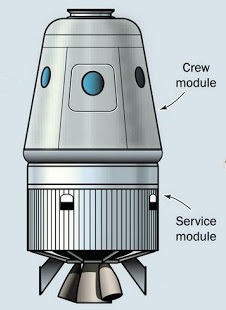Rakesh Sharma was the first Indian citizen to fly into space. He was carried into orbit aboard a Russian spacecraft in 1984. In August of 2007, the Chairman of the Indian Space Research Organization (ISRO) stated that they were "seriously considering" developing a human spaceflight program. Around sixteen million dollars was allocated for 2007 and 2008 for preliminary "pre-project" initiatives to develop a fully autonomous orbital vehicle that can carry a crew of two into low Earth orbit. A budget of about eight hundred and fifty million dollars was allocated for the planning period of 2007 to 2012 by the Planning Commission. It is estimated that over two billion dollars will ultimately be required for the manned space mission which is due to launch in 2016.
An astronaut training facility will be built in Bangalore to support the manned space program. A third launch pad will be constructed at the Satish Dhawan Space Center in Sriharkota dedicated to the manned program. It will feature extra support capabilities such as methods of entry from the crew and an escape chute in case of emergency.
Testing on equipment for the manned missions began when the thirteen hundred pound Space Capsule Recovery experiment was launched into orbit aboard a Polar Satellite Launch Vehicle in January of 2007. It was "designed to demonstrate the capability to recover an orbiting space capsule, and the technology of an orbiting platform for performing experiments in microgravity conditions. It was also intended to test reusable Thermal Protection System, navigation, guidance and control, hypersonic aero-thermodynamics, management of communication blackout, deceleration and flotation system and recovery operations." the SCR used silicon tiles for a heat shield for reentry. The ISRO is working on carbon composite heat shields for future missions.
The SCR was successfully recovered from orbit twelve days after launch. A network of ground stations across the Earth was utilized to assist in de-orbiting the capsule. It was brought down from its four hundred mile circular polar orbit and reentered the atmosphere at about sixty miles. Parachutes lowered its velocity down to about one hundred and sixty miles an hour. When it splashed down, floatation devices were triggered.
The primary objective of the Indian manned mission program is to develop the fully autonomous three ton ISRO Orbital Vehicle spacecraft. It will be able to carry a two member crew into orbit and return them safely to Earth after a few orbit. The launch vehicle will be a Geosynchronous Satellite Launch Vehicle Mark II which has a cryogenic engine. The OV will splash down in the Bay of Bengal. The OV will be have an extendable version which will be able to rendezvous and dock with space stations. In 2009, a full scale model of the OV crew capsule was built and delivered to the Satish Dhawan Space Center to help train Indian astronauts. India has signed an agreement with Russia to assist them in the design and construction of the OV.
Indian Orbital Vehicle:
